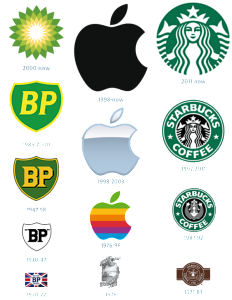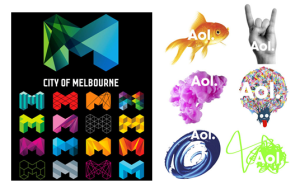Why You Should Never Close the Story on Your Brand
“A great brand is a story that’s never completely told.” – Scott Bedbury
Adaptability. It’s a word that has been used on this very blog to describe how logo design needs to include versatile elements to adapt to a digitally-focused media world, but the same concept can (and should) be tied back to the entirety of a brand.
To me, there are few things more frustrating than hearing that the reasons something hasn’t changed is because “that’s the way it’s always been done.” Showing a deliberate avoidance of any sense of evolution without true reasoning is a first-class ticket to failure. Industries and marketplaces change constantly – and in order to stay relevant, so must your branding.
The above quote from Scott Bedbury perfectly in line with the concept of brand adaptability. A great brand is one who never really reaches the end of their story – they are an ongoing manuscript,  adding new pages as the world around them moves forward, shifting their branding strategies not just to fit the new landscape, but to continuously find that area of differentiation that will set them apart from the competition and allow them to rise above the branding fray.
adding new pages as the world around them moves forward, shifting their branding strategies not just to fit the new landscape, but to continuously find that area of differentiation that will set them apart from the competition and allow them to rise above the branding fray.
These brands are self-aware about their place in the market and proactive in anticipating how that place can shift suddenly and without notice – they are the ones who always seem to be ahead of the curve, never caught flat-footed by the winds of change. That’s not an accident. That is the result of creating a brand that can evolve when needed without compromising the overall brand integrity.
But take note that an adaptive brand is not synonymous with multiple total rebrands. In fact, it falls more in line with brand shifts instead of brand refreshes. A rebrand or brand refresh takes time, money, effort both in the branding process and immediately following, when the new brand must be communicated and try to build brand equity.
The equity earned through time on the market can often be the most valuable commodity available to the brand, and to restart this process instead of using it to their advantage is a missed opportunity to ease the burden of adapting their strategy.
For instance, if there is a brand who has been on the market for 40 years with a logo that has become outdated, it would be unwise to group the rest of the brand elements in with an updated logo  – instead, find the most recognizable and timeless elements of the logo and adapt them to fit your new direction, much like the logos shown to the right. That way, the new logo and any associate branding assets can be bolstered by the foundation laid throughout the brand’s previous history while simultaneously adding to the story as needed.
– instead, find the most recognizable and timeless elements of the logo and adapt them to fit your new direction, much like the logos shown to the right. That way, the new logo and any associate branding assets can be bolstered by the foundation laid throughout the brand’s previous history while simultaneously adding to the story as needed.
The brands who have found success in this area don’t rewrite their story, they simply add a new chapter, one connects their past with the needs of their future, and leaves the door open for what comes next.
Addison Whitney is a global branding firm with a passion for building strong brands.
To learn more about Addison Whitney, visit our website at AddisonWhitney.com, or contact us here.